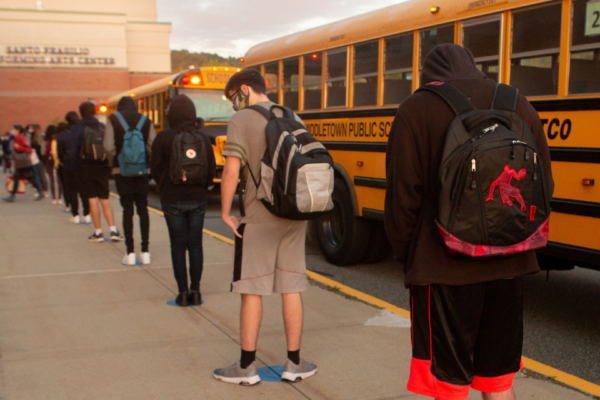We have heard a great deal over the course of the pandemic about “learning loss.” But while the negative impact of Covid-19 on students of all kinds is becoming increasingly clear, some students were struggling long before we learned the nuances of mask-wearing, including those living in extreme poverty or without homes; students in juvenile justice facilities; and over-age, under-credited high schoolers.
Our existing measures of school performance, however, don’t provide enough information to identify which schools are doing a good job with these vulnerable student populations and which aren’t.
Knowing a school’s numbers of English language learners, students with disabilities, and students eligible for free or reduced-price lunch and their proficiency rates on standardized tests doesn’t reveal the schools’ relative success with the toughest-to-educate students. To the contrary, under traditional measures of school performance, the more high-need students a school serves, the worse its performance looks.
These challenges, and a desire to identify schools that do a great job with the nation’s most challenged students so that others can learn from them, have been the focus since 2018 of the National Campaign for Highest-Need Students. This initiative grew out of the work of ACE Charter Schools, a network founded by community leaders in San Jose, California, intent on addressing the profound academic struggles of the area’s most disengaged and disenfranchised students.
The campaign turned to Education Analytics and Public Impact, companies that support school improvement, to develop a School Needs Index to more precisely determine the level of student academic, social and emotional need in each school and gauge which schools have been most successful in supporting the nation’s most disadvantaged students.
Their model, outlined in a new report, Identifying Schools Achieving Great Results with Highest-Need Students, gives decision-makers a tool to determine which schools serve highest-need students, and which lead to the greatest student success. The School Needs Index groups dozens of student characteristics into four domains to assess the level of student need: student engagement (including chronic absenteeism and suspension rates); demographics (students who are new to the school, from migrant families, or with a specific disability status); academics (including prior test scores); and economics (estimates of family income or homelessness).
[Register Now: Webinar: Highest Need Students, Delivering for Highest-Need Students Post-Pandemic]
Unlike measures of need based on opinion or politics, the School Needs Index includes and weights characteristics based on how much they actually contribute to student outcomes, such as reading and math learning.
With this measure of school need in hand, it becomes possible to compare how well each school is doing with highest-need students, in comparison to schools serving similar students. Importantly, the analysis focuses on students’ learning growth, rather than merely a snapshot of their performance, allowing policymakers to see which schools are doing the best job serving these students.
The framework, which we continue to refine, provides a critical step toward scaling up the best models for highest-need students, because we can finally see which schools are having the greatest impact for the students we have systematically failed to support.
With better information, system leaders and other decision-makers can direct resources more equitably, and they can hold schools accountable based on their true accomplishments. And schools can begin to learn much more from one another about what it takes to give the highest-need students the schools they deserve.
Bryan C. Hassel is co-president of Public Impact. Greg Lippman is founder and CEO of ACE Charter Schools, and founder of the National Campaign for Highest-Need Students.
Public Impact and FutureEd are hosting a webinar on the Index on June 17.


